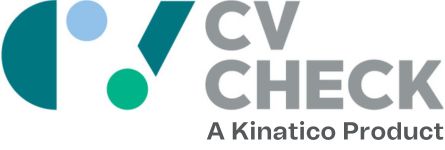Put simply, knowledge management is a process that dictates the way information in your organisation is created, stored, distributed and used.
Regardless of the software or tools you use to create one, a proper knowledge management system can vastly improve efficiency and productivity in the workplace because it prevents employees from having to relearn the same things time and time again, which means clients are better served when there are changes to personnel.
Steven Oesterreich, Managing Director Asia-Pacific of Ark Group Australia, provides some useful tips on how to implement an effective system, emphasising that the keys to success are company-wide communication and engagement.
Why is knowledge management important?
A study by SIS International Research found 68 per cent of respondents had been held up waiting for information from a colleague, and estimates average delays of 3.5 hours per worker per week.
Yet over 80 per cent of respondents to a Global Deloitte survey said that sharing company knowledge adds real client value, and leads to competitive advantage – perhaps partly because organisations don’t have to relearn how to handle internal databases, procedures and policies every time an employee moves on.
“Personally, I believe it’s an integration and collaboration between information, storytelling, communication and learning,” says Oesterreich, whose company develops and creates knowledge management forums based on a range of different techniques, and finds international experts to demonstrate them.
“It’s about making sure the knowledge that your organisation has is retained within your company to ensure that your clients are looked after, your organisation keeps going and you’re not relearning the same things over and over again.”
Knowledge management solutions
Oesterreich encourages organisations to find (or design) a knowledge management solution that works for their individual organisation.
A tailored system may consist of one or a combination of the following:
- Starting a shared drive for storing and collaborating on documents, including style guides, workplace policies and procedures.
- Defining an organisational communication framework, such as best practice for email, and a chat for the quick sharing of information.
- Creating and updating organisational charts, role descriptions, and role process documents.
- Setting up task and project management systems, and flowchart tools, such as Atlassian JIRA, Confluence or Smartsheet, to streamline workflows and maximise productivity.
Google Drive is perhaps one of the simplest ways to set up a basic online knowledge management system. You can control who can view, modify and comment on each document, and anyone with a Google account and the password can access the system, so you don’t have to set up individual accounts for users.
There are other methods of furthering collaboration between groups, including harnessing the power of social media or intranet platforms, or other software, such as:
- OpenKM – An open-source platform, so users can access the system without having to log in.
- MyBase – A free option for building a knowledge or research database, allows for keyword and hierarchical tagging, but may not work as well with larger files.
- eXo – Collaboration platform for larger companies and growing teams. Features include version control and access permissions, chat, an integrated calendar and task management.
- Slack – Another collaboration platform, designed to streamline workflows and communication to get teams working smarter and faster.
Encouraging communication
Another way of describing knowledge management is as a way of capturing, evaluating and sharing company knowledge and expertise, so that employees have access to the information they need, when they need it.
This is the most important aspect of knowledge management – as employee expertise is an asset that doesn’t realise its true value until it’s shared.
However, encouraging employees to part with knowledge can be difficult, Oesterreich says, because some people prefer to keep information to themselves. This could be for any number of reasons, including as a form of ‘job security’ or to establish themselves as the ‘expert’ on a particular matter.
Practical tips for encouraging communication in the workplace include:
- Ensuring management teams are leading by example in the sharing of information.
- Holding meetings with representatives or people from different teams and departments, so everyone is up to date with what’s happening across the company.
- Encouraging the use of in-house chat systems.
- Setting up a knowledge management system that facilitates the sharing of information while employees are with the organisation.
- Creating a “safe space” where people feel like they can talk about issues they’ve had and how they dealt with them.
“In my organisation, the one thing I try to avoid is placing blame on problems,” Oesterreich says. “Make it so people will want to talk about what’s going on in the work that they’re doing, even if they made a mistake, so we can learn from it.”
Tips for implementing a new system
Oesterreich suggests larger companies implement new systems via a step-by-step process, testing its effectiveness in small groups, while smaller organisations, on the other hand, may be able to establish a knowledge management system more quickly in one fell swoop.
“In my organisation, everyone knows about everyone else’s role in the company, everyone talks, everyone has a chance to work in other people’s roles, so they know where to look for the information to help cover any short-term fires that may happen,” Oesterreich says.
Remember to set up month benchmarks to test and measure any new systems and tools. That way you can ensure they are effective and engaging staff, and track post-rollout progress.
In terms of ROI, an effective knowledge management system could be worth its weight in gold, as it helps employees work smarter, more productively and more efficiently. But a properly integrated approach is key.
“When you go out into the knowledge management world, a lot of people say it’s not about information, it’s about communication, or vice versa, but I believe it’s a compound of the two,” Oesterreich says.
“It’s about keeping good records, sharing information, curating it and filtering it to make sure everybody is moving in the same direction and what’s pertinent is retained within your company.”




